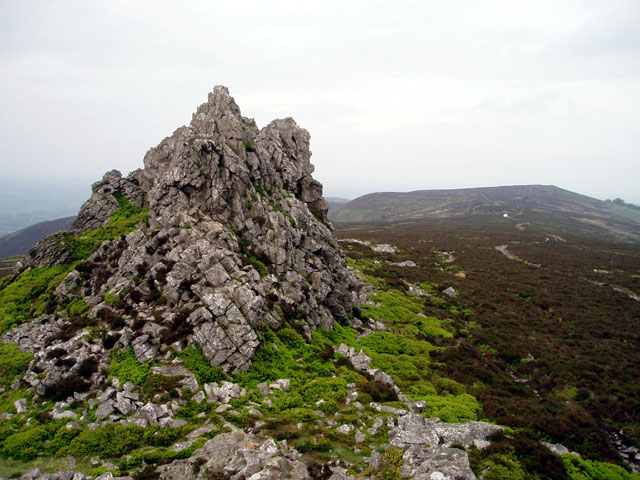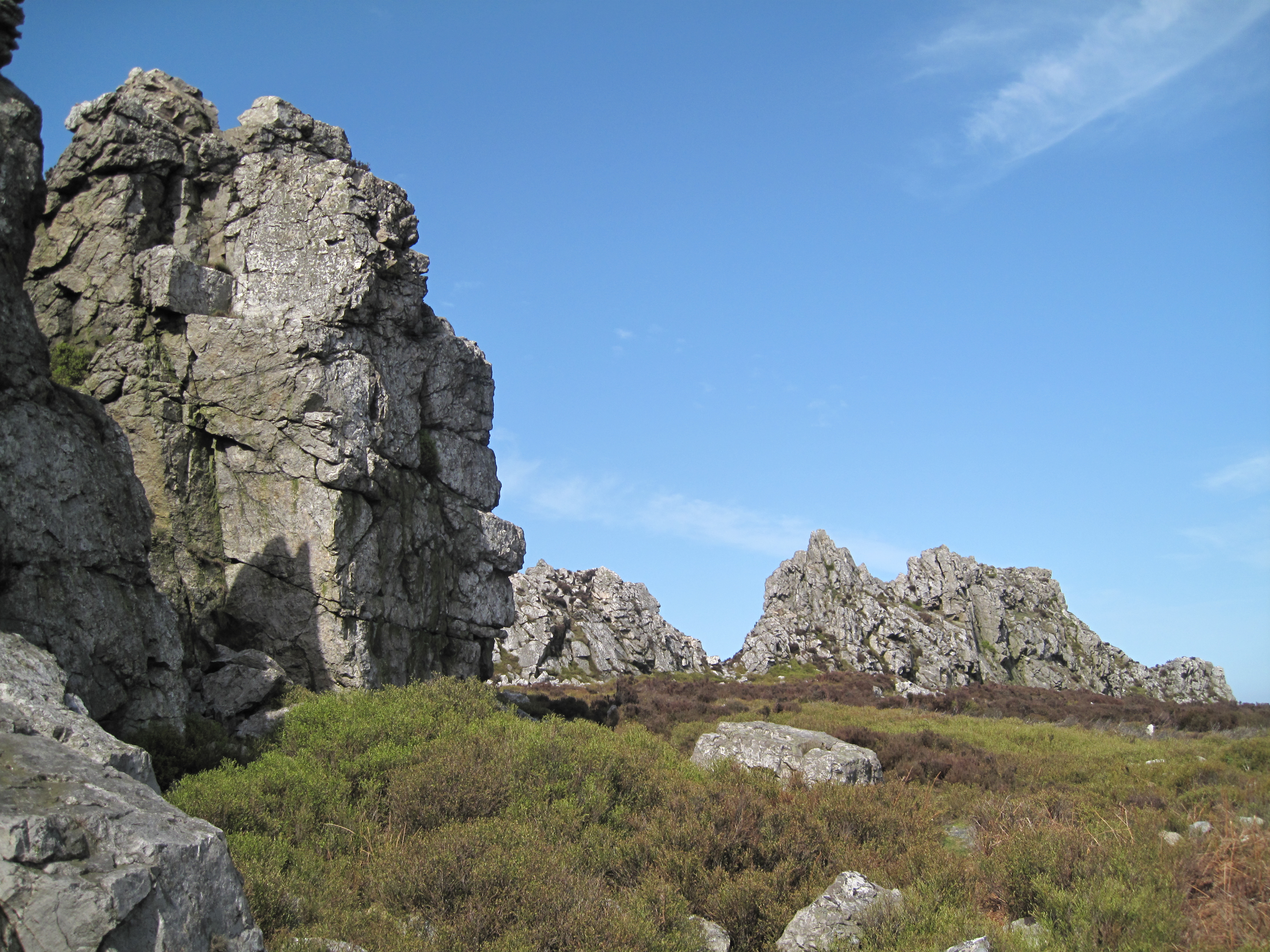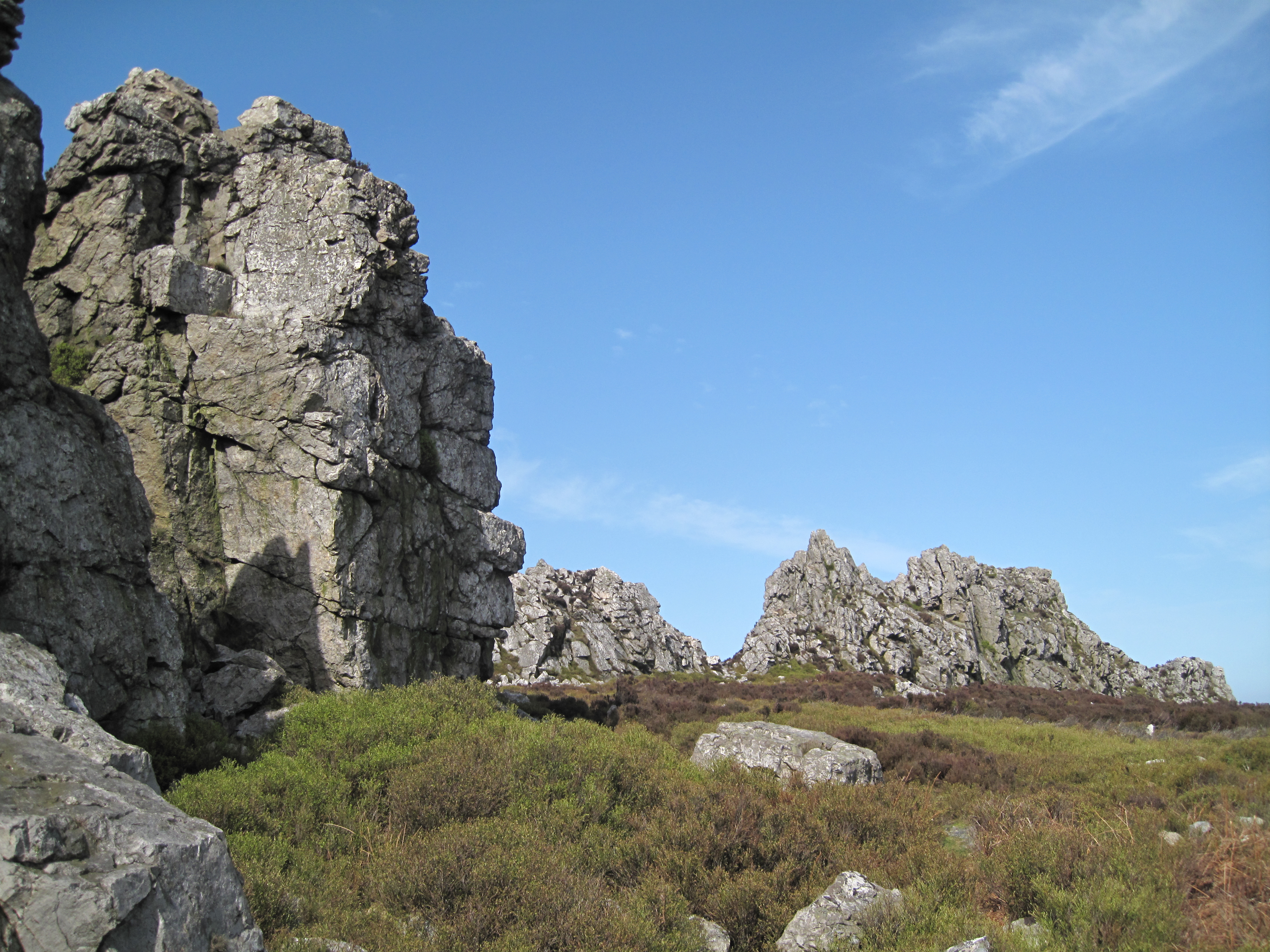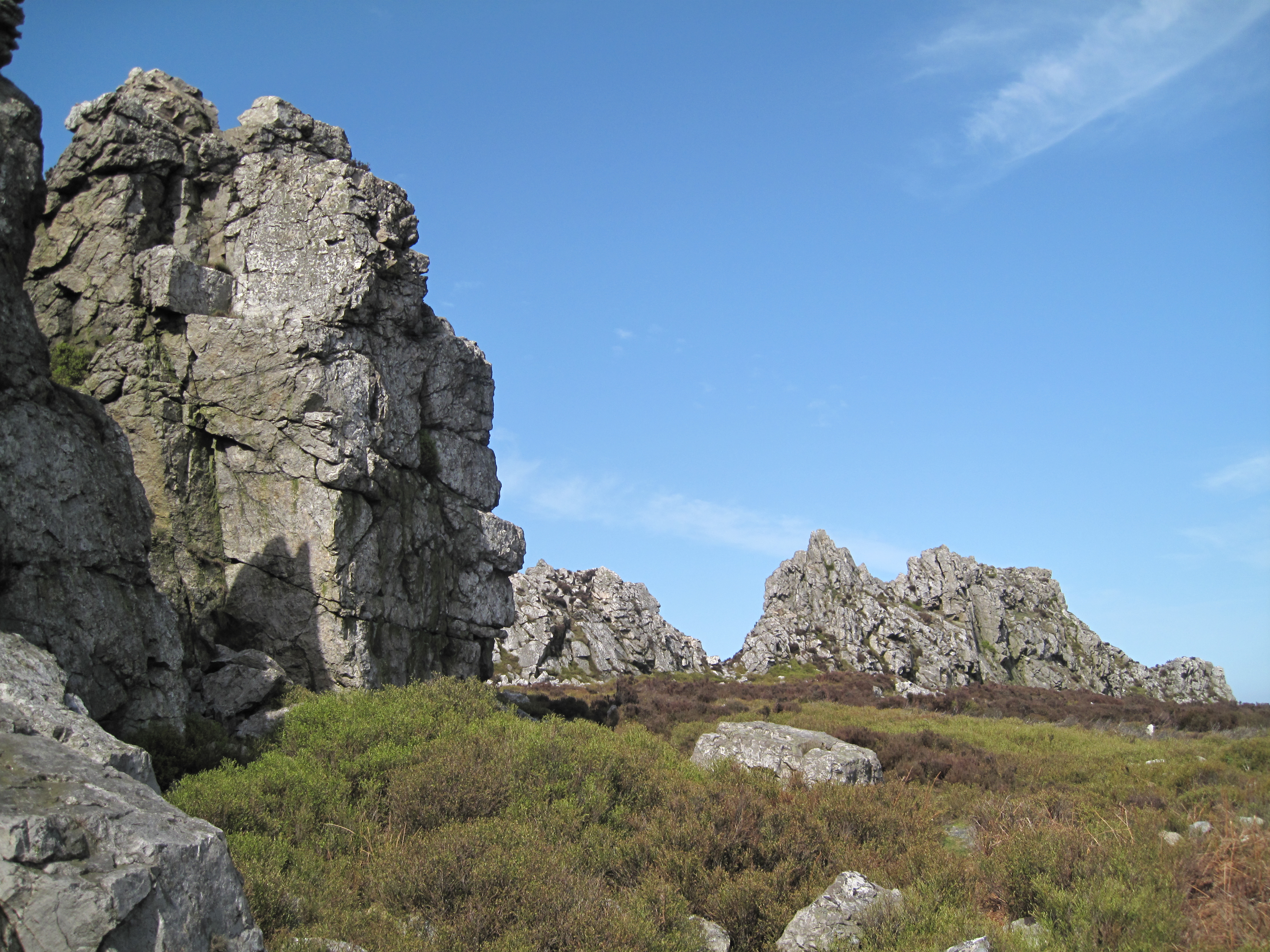Landscape of the Stiperstones

The Stiperstones is easily one of the most stunning and rugged landscapes in Shropshire, and its dramatic look is a result of millions of years of geological drama combined with unique wildlife.
🗿 The Geology and Local Rock Stars
The backbone of the Stiperstones is built from some seriously old, tough material: the Stiperstones Quartzite Formation. This grey-white quartz sandstone formed about 480 million years ago during the Ordovician period.
The most exciting bits of the ridge—the giant rock piles called tors and the huge fields of broken rock (scree) surrounding them—weren't created by a glacier. Instead, during the last Ice Age, the ridge was subjected to brutal periglacial conditions (intense freezing and thawing). This action essentially shattered the brittle quartzite, leaving behind the most resistant chunks as those spectacular, ragged tors.
This unique geology also holds a key part of the area's human history: the crumpling of the rock layers exposed valuable mineral veins of lead and zinc, which is why this area was a massive mining hub for centuries.


Famous tors along the ridge
- Shepherd's Rock
- Devil's Chair (the most famous, tied to local legends about the Devil dropping his stones)
- Manstone Rock (the highest point on the ridge, reaching 536 metres)
- Cranberry Rock
- Nipstone Rock
- The Rock
🌿 Biodiversity and the "Back to Purple" Project
The Stiperstones is protected as a National Nature Reserve (NNR) because it's a rich, living patchwork of habitats.
The Main Habitat: The dominant feature is open heathland, which actually got its start when early humans cleared the area for grazing.
Plant Life: What grows where depends on the weather: Bell heather and western gorse love the warmer, south-facing slopes, while common heather and bilberry (whinberry) prefer the cooler, north-facing sides. Look closely, and you'll even find rare, high-altitude plants like cowberry and crowberry near the summit.
Wildlife Haven: This diverse environment supports a wealth of creatures.
Birds: The open moor is home to breeding birds like the red grouse, skylark, and meadow pipit. You'll regularly spot magnificent birds of prey like buzzards and ravens soaring above, and even the red kite has been seen recently.
Other Animals: The area provides shelter for animals like foxes and common lizards. The insect life is notable, too, with beautiful species like the grayling and green hairstreak butterflies thriving here.


A major conservation effort called 'Back to Purple' has been restoring the landscape back to its original heathland glory after parts of it were lost to forests. They use smart methods like controlled burning of old heather to encourage fresh, vigorous growth and sustainably graze the area using animals like Hebridean sheep and Exmoor ponies.
Wildlife gallery
Representative species you may encounter around the ridge and heath.






Wildlife images sourced via Openverse (Flickr providers) under their respective licenses. Unsplash support is enabled — I can swap in specific Unsplash photos on request.